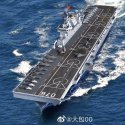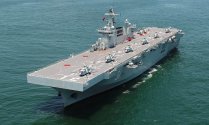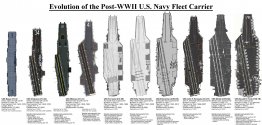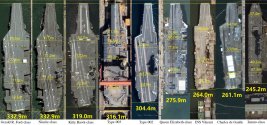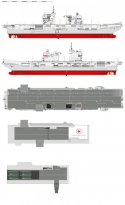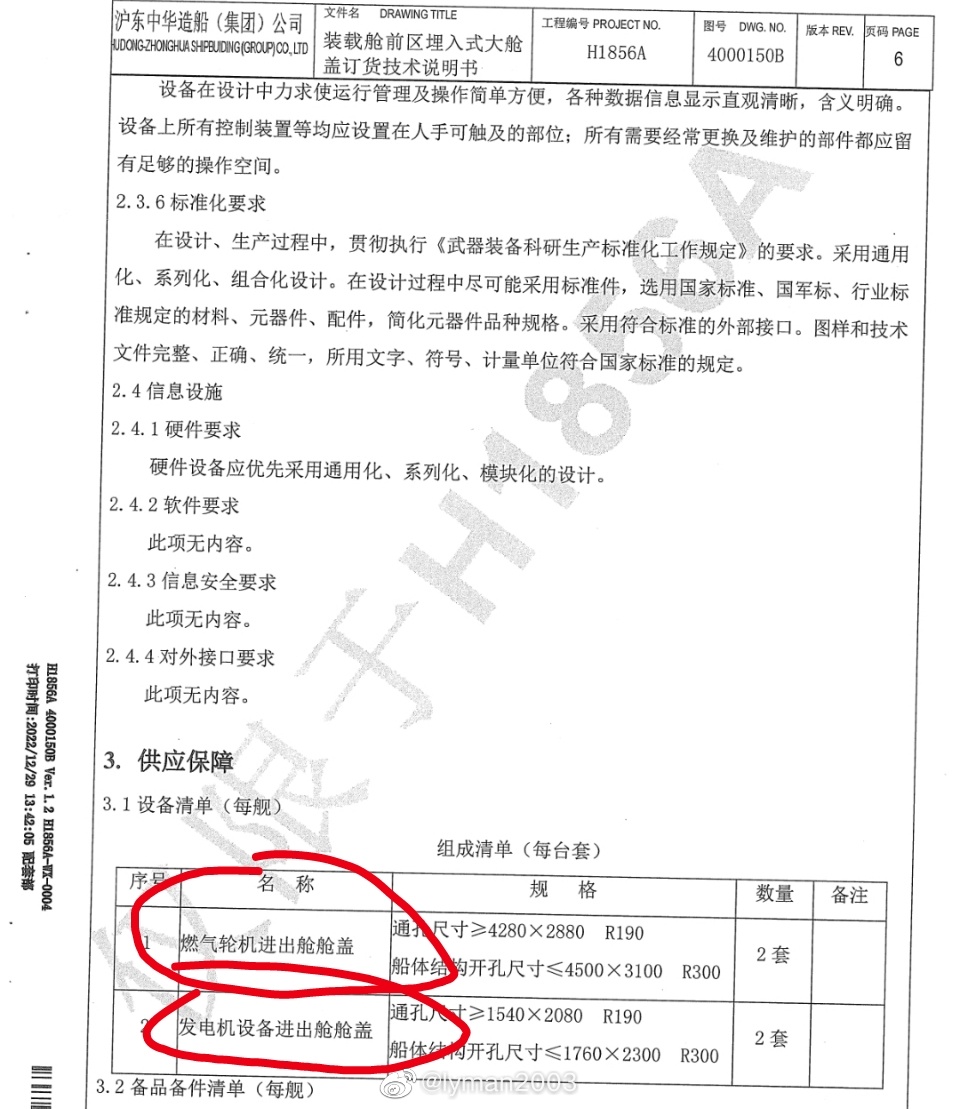After I wrote the previous post I realized something that in retrospect seems obvious but is always missed in discussions leading them in counter-productive direction because we think about amphibious assault ships and S/VTOL aircraft in the wrong terms: what they seem to be, rather than what they are intended to be.
There is a fundamental difference between a USN fleet carrier and a USN amphibious assault ship.
- On a fleet carrier the entire crew of the ship including aviation support, maintenance crews and pilots, with the exception of USMC VMFA squadrons, are USN personnel subordinate to USN command structure.
- On an amphibious assault ship aviation support are USN personnel but pilots are USMC and maintenance crews are partly USN personnel that stays on the ship and partly USMC units which may or may not be deployed on land as part of the expeditionary force. USMC personnel is subordinate to USMC command structure and during landing operations USMC has the command of the operation including over USN personnel on amphibious ships.
Historically USMC had two types of fixed-wing squadrons - VMFA for CTOL and VMA for S/VTOL - that reflected that difference. Now both F-35B and C are operated by VMFA but all remaining AV-8B are VMA.
USMC has S/VTOL for operations from
improvised airfields on land. Operations from amphibious assault ships are a side benefit that mirrors how VFMA operate from carriers or from land.
S/VTOL aircraft - specifically the Harrier - were not developed for naval aviation. They were developed for ground forces as frontline aircraft capable of operating without infrastructure necessary for CTOL. The impulse for development of S/VTOL CAS was Korean War because dedicated attack helicopters were not available until introduction of AH-1 in 1967 and they carried minimal payloads. First generation Harriers carried over 2t.
First generation Harriers were operated by RAF before Sea Harrier was developed for RN and RAF continued to be the main operator of the type in Britain. This was because under British military structure RAF was responsible for providing air support to expeditionary forces.
Soviet Yak-38 was developed in response to the Harrier but through a misunderstanding of its primary purpose. Lack of that purpose in Soviet doctrine both indirectly and directly were the cause of insufficient funding and support for the program.
Whenever we speculate about design and function of Type 076 or possible S/VTOL jet for PLAN we commit the fallacy of misattribution.
Amphibious assault ships are not used as light carriers
unless it is already feasible with existing assets. Navies don't need light carriers but they will use light carriers if they have the means to improvise them. S/VTOL jets are not necessary for naval aviation but for expeditionary forces operating from improvised airfields and so unless PLAMC or PLAGF naval infantry units require them for operations they will not be developed.
Light carriers and naval S/VTOL jets are inefficient as naval assets because they are
expeditionary assets and we should expect all logical design and development process to follow the logic of
operations rather than of "what it looks like to me".
How does this apply to 076 - read below:
Oh look... a
light carrier.
View attachment 106835
This image shows Type 075 with fixed-wing UCAVs which may very well be the same error as mentioned above - treating an amphibious assault ship as a light carrier because everyone keeps talking about using them as light carriers. It's also an incorrect, unworkable arrangement of deck space meaning the artist received no specific instruction and worked with poor understanding of deck operations.
From what I've seen here the
only thing that we know about Type 076 is that it "will carry UCAV" without any additional information.
The C in UCAV stands for "combat" and not "conventional" or "fixed-wing". Type 076 is an
amphibious assault ship and there is no reason to suspect that the UCAV type preferred for an amphibious assault ship would be fixed-wing for practical reasons.
Fixed-wing aircraft cause all kinds of complications. While EM catapult and lack of human pilot can greatly shorten the distance for takeoff the problem of recovery remains unchanged. During takeoff UCAV has top speed when leaving the deck. During landing it has top speed when approaching the deck. You need space for that and space is scarce on a small deck, especially if at the same time other aircraft are being serviced or prepared for takeoff. Even if you add the angled deck every UCAV has to be redirected to another area before next recovery which also requires space.
Fixed-wing also allows greater payload and range but:
- payload can be distributed as soon as pilots don't need to do the targeting
- range is partly a function of payload.
It doesn't make much sense to develop an amphibious assault ship around fixed-wing UCAVs performing high sortie rate because of space requirements. Instead it's better to have an even higher sortie rate with VTOLs because the use of deck space is much more efficient. Furthermore since VTOL UCAV doesn't have to be large it doesn't need a large lift making it possible to use a greater number of smaller lifts for better use of deck and internal space.
Just helos take up space because of forces generated by rotors - here these six can deploy at the same time.
View attachment 106836
UCAV LHA might be much more like a bee hive with many small drones constantly flying in and out than a nest with birds sitting on it and rarely flying.
Furthermore the biggest advantage UAVs have is
swarming.
Swarming requires numbers but takeoffs take time which wastes fuel of UAVs in the air. So the best use of swarming tactics is to deploy large numbers of drones
simultaneously. Multiple UAVs in a single simultaneous launch require multiple UAVs in single simultaneous recovery and transfer.
This is a completely different type of deck operation than handful of large aircraft being deployed in traditional ops.
Also "
Type 076 will carry UCAV" has people thinking first in terms of deck space but I think in terms of "
the pilots are not in the aircraft but someone needs to pilot them". Type 076 will need space for operators which will be a second bigger CIC if at any given time there's 50 or 100 or more UAVs and UCAVs in the air. Multiple drones also mean multiple ISR sources which must not be wasted - that's another CIC.
Coupled with different deck ops and lift arrangement it means a completely different internal layout but it may look very similar on the outside. And if 076 uses both manned and unmanned aircraft then complexity increases - it needs a big lift and perhaps smaller lifts. The difference might be completely not where most would look for it.
And finally if USN/USMC and RN experience teaches us anything it is that
an amphibious assault ship operating without carrier support should transfer its assets to the shore and withdraw as soon as possible. It's a highly vulnerable asset. Why would anyone keep it within striking distance? Drones are expendable. If retreat is needed then recover troops and run.
Hope this helps.


